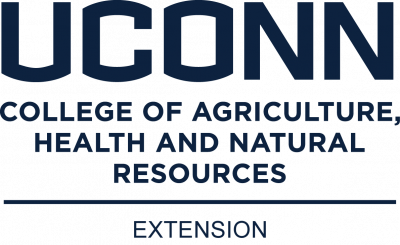By Victoria Wallace and Alyssa Siegel-Miles, UConn Extension
In 2010, Connecticut state legislation banned the application of all EPA-registered landscape and lawn care pesticides on the grounds of public or private daycare and K-8 grade schools. Since enactment of this legislation, control of weeds on school ground properties has proved to be a challenge and a significant cause of frustration to school grounds managers.
Besides being unattractive and disruptive, weeds compete with desired plants for light, nutrients, water and space. In athletic fields, weeds affect surface uniformity of the turfgrass stand, compromising player safety. In landscape plantings on school properties, some weeds are not just unsightly, but also affect the health of faculty and students. Weeds may cause allergies, exude toxins that act as skin irritants, or have thorns that can scratch. Left unchecked, weeds often provide a protective habitat to insects (e.g., mosquitoes, bees) and black legged/deer ticks (Ixodes scapularis), which transmit tick-borne diseases such as Lyme, Babesiosis, and Anaplasmosis, threatening the health of students and school staff.
A well-developed Integrated Pest Management (IPM) approach may reduce weed populations to levels that are acceptable for appropriate need and use. Control measures to combat weeds must be predominantly focused on cultural management practices that enhance turfgrass and landscape plant health. In this challenging environment, weeds growing in turf and landscape beds, once easily eradicated with a pre-emergent or post-emergent herbicide, now become large, problematic infestations when left unmanaged. Therefore, weed management needs to be an ongoing, consistently performed maintenance practice.
Weed Definition and Biology
The simplest definition of a weed is “a plant growing out of place.” Plants are generally considered weeds when they are competitive, persistent, damaging, and negatively impactful on human activity.
Characteristics of weeds that give them competitive advantage over other plants include (Curran et. al., 2016):
- Abundant seed production.
- Rapid germination and establishment even under adverse conditions.
- Seed dormancy (a resting stage preventing seed from germinating until conditions are favorable for the plant’s survival).
- Extended survival of buried seed.
- Capacity to spread aggressively by root, seed, or fruit adaptations (e.g., wind dispersal, consumption by birds).
- Asexual reproduction through vegetative structures (i.e., stolons, rhizomes, tubers).
Ability to occupy a site disturbed by humans.
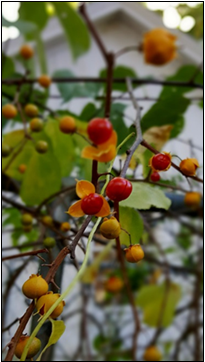
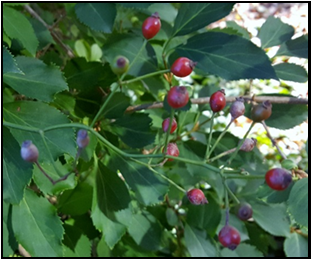
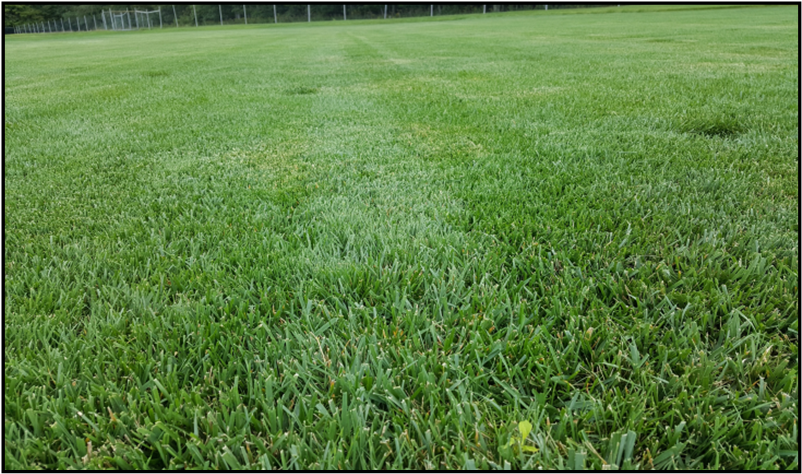
Understanding the biology and life cycle of the most problematic weeds in the landscape helps in plant identification and determining the most effective control strategy. The three major life cycle categories are:
- Annual: a plant that completes its lifecycle from seed to mature plant (flowering, seed production, and death) in one year. Winter annuals germinate in the fall and complete their life cycles by early summer. Summer annuals germinate in early summer and complete their life cycle by late fall.
- Biennial: a plant that completes its life cycle in two years. Flowering and seed production take place in the second year.
- Perennial: a plant that lives more than two years and continues growing until it reaches maturity (3-5 years on average).
Weeds are either monocots or dicots:
- Monocots emerge from a seed with a single leaf. Grasses, sedges, and rushes are monocots. Leaves are typically long and narrow with veins running parallel to each other.
- Dicots germinate and emerge with two simple leaves. Dicots, also known as broadleafed plants, include clover, knotweed, and plantain. The leaves of broadleaf plants typically are wider than grasses with veins in a netlike pattern, divided by a central and basal main vein. The arrangement of leaves on stems (opposite, alternate, or whorled), leaf shape, and surface characteristics can be useful in identification.
Integrated Pest Management (IPM)
IPM is a holistic approach to pest management that controls pests through effective, economical, and ecologically sustainable methods. Multiple tactics are integrated for pest management, including mechanical, cultural, biological, and chemical controls, use of resistant varieties, prevention, and behavioral modification. IPM practices should always incorporate cultural practices that minimize excess labor and use of non-renewable human inputs. Prevention, maintaining plant health, and proper pest identification are of primary importance. Pesticides, where permitted, are used only after exhausting other mechanisms of control, when damage to desired plants needs to be addressed in order to protect the plant or human health. Steps are taken to ensure the least toxic pesticide available is used. Refer to UConn’s IPM website for more information and tools: ipm.uconn.edu
Regular scouting of turfgrass and landscape areas for pests, including weeds, is a critical component of a sound IPM program. The method and timing of any weed management strategy will depend on the correct identification and biology of the weed. When scouting:
- Identify and record all weed species found, including their approximate height and stage of growth.
- For each identified species, understand its life cycle to determine the best time to control its growth, when it is in flower, and how it reproduces.
- Determine the severity of the infestation or acceptable population threshold.
Many books and charts are available to help in identifying common lawn weeds. Some helpful resources include:
- UConn IPM: ipm.uconn.edu/school - see “Identification of Problem Weeds in School Turf/Landscapes”
- CT Invasive Plant Working Group: cipwg.uconn.edu/invasive_plant_list
- UMass Extension: extension.umass.edu/landscape/weed-herbarium
- Cornell Extension: nysipm.cornell.edu/agriculture/vegetables/weed-identification
For additional help in weed identification, contact a local Cooperative Extension specialist.
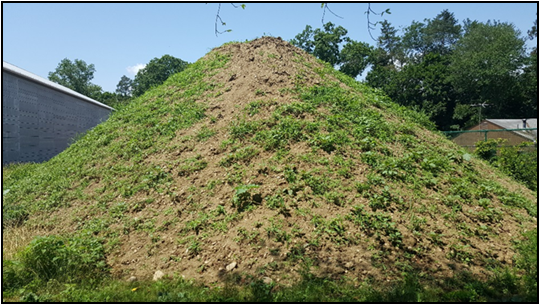
It is easier to prevent the introduction of weeds than it is to control them after establishment. Minimize introduction of topsoil contaminants and weeds moving into landscape beds and turf areas. Important practices to reduce weed populations include:
- Regularly scout for and eradicate emerging new weeds.
- Clean mowing and landscape equipment before transporting to other sites. If weed populations are identified and present in the lawn areas, mow the least weedy areas first, before mowing the more populated weedier areas.
- Control or eliminate weeds around buildings, in landscape areas, and along fences and property perimeters.
- Use only weed-free compost, mulch, seed, and other materials. Purchase high quality plants or turf seed. When purchasing grass seed, examine seed labels for the least amount of weed and crop seed present.
- Recognize that weed seeds can land on the mulch surface. Replenish the mulch layer in landscape beds every 1-3 years to prevent germination of seeds that may contaminate the mulch surface.
- Remove weeds from plant material or containers to prevent the introduction of weeds to a new landscape site and to reduce future problem populations.
- Prevent or minimize the production of seed or vegetative spread of annual and perennial weeds on site.
Cultural Practices That Discourage Weed Establishment
The presence of weeds often indicates stressed or unhealthy turfgrass plants. When environmental conditions provide unsuitable growing conditions and limit turfgrass growth, weeds can easily establish and compete for nutrients, sunlight, water, and space. Maintain a healthy turfgrass stand through the use of sound cultural practices (i.e., mowing, aeration, fertilization, and irrigation) to deter weed encroachment. When weed growth is discouraged or suppressed, significant labor and financial savings are realized.
Weeds often provide clues to soil health in the turfgrass growing environment. When poor growing conditions create voids in the turfgrass stand, weeds inevitably fill those spaces. Whether weeds are removed mechanically or with an herbicide, they will inevitably return if the conditions encouraging their presence are left unchanged and the underlying problem is not corrected. Modifying cultural practices or amending soil conditions that favor the health of the turfgrass will reduce weed populations.
Certain weeds have been identified to thrive in specific environments. When large populations of these weeds are present, they can help identify particular soil conditions that may limit turfgrass growth and establishment.
| Weeds: | Preferred Growing Conditions: |
| Algae, moss | Shade, acidic soil, excessive surface moisture |
| Annual bluegrass | Poor drainage, soil compaction, low fertility |
| Chickweed | Low soil nitrogen levels |
| Crabgrass | Excessive moisture, compacted soils, low fertility |
| Goosegrass | Soil compaction, poor soil aeration |
| Plantain | Soil compaction, alkaline soil |
| Prostrate knotweed | Soil compaction, alkaline soil |
| Sedges | Poor drainage, overwatering |
| Sorrel | Acidic soil, low fertility |
| Quackgrass | Acidic soil, low fertility |
| White clover | Low soil nitrogen levels |
BUILD AND MAINTAIN HEALTHY SOIL
Turfgrass grows best when the soil pH is between 6.0 and 7.2 (a pH of 7 is neutral, below 7 is acidic, above 7 is alkaline). Obtain a soil test to determine the overall health of the soil, including the pH (acidity or alkalinity), nutrient composition, and organic matter content. Optimal availability of the nutrients (e.g., nitrogen, phosphorus, calcium) that allow turfgrasses to thrive is at a neutral pH range.


- Soils in CT tend to be naturally on the acidic side. If the soil pH is identified as too acidic, it can be raised through periodic applications of liming materials. Results from a soil test will include recommendations on the quantity of limestone that should be applied. Lime applications are most effective when establishing new turf, as the lime can easily be incorporated into the soil. For established turfgrass areas, where tree roots predominate, lime should be applied at the time of core cultivation.
- Organic materials, such as compost, liquid seaweed, and compost teas, can provide supplemental nutrients to stressed turfgrass. They should be considered part of the overall nutrient management program.
- Compost applications can be a valuable addition for soils with less than 4-6% soil organic matter (Henderson, Wallace, and Campbell, 2013). Benefits of compost include:
- Improves retention of turfgrass cover
- Increases water retention
- Decreases bulk density (reduces soil compaction)
- Decreases surface hardness
- Organic materials offer an important food source for beneficial microorganisms (e.g., bacteria, fungi) in the soil. Microorganisms fix nitrogen from the air, mineralize soil organic nutrients, generate carbon dioxide, and dissolve mineral nutrients (Sylvia et al. 2005). They also help to aerate the soil and suppress many lawn pests and disease problems.
- Routine topdressing of turfgrass with compost is not recommended unless a soil test indicates that phosphorus (P) levels in the soil are deficient. P applications to turfgrass are not permitted unless a need is indicated by a soil test taken within 2 years. P applications are permitted without a soil test for the establishment of a turfgrass area if the compost contains <0.67% phosphate (P2O5) (Henderson, Wallace, Campbell, 2013). CT state law stipulates that no phosphorus (P) fertilizer applications can be made from December 1- March 15.
- Compost applications should be included in the overall fertility management program and calibrated correctly. Test compost before purchase for organic matter quality. Compost sources containing less than 0.3% phosphate, such as leaf compost, are recommended. Application and Incorporation of compost into the soil of an established turf can be labor intensive and difficult.
- To date, kelp and seaweed products have only been found to improve the health of stressed turf. Little benefit has been shown from these products when used on unstressed turfgrass areas maintained at a high height of cut (turf.uconn.edu, 2015).
- Compost applications can be a valuable addition for soils with less than 4-6% soil organic matter (Henderson, Wallace, and Campbell, 2013). Benefits of compost include:
ESTABLISHMENT OF NEW TURFGRASS AREAS
SITE PREPARATION AND PLANTING:
- Take a soil test. Amend or create conditions that favor healthy turfgrass growth.
- Scout for weeds and focus on early eradication. Smaller plants have limited root development. If weed populations are extensive, physical removal, smothering with plastic or organic materials, or use of an allowed minimum-risk herbicide may be required.
- Determine if spot treatment or major renovation of the area is needed. Spot treatments may be effective where the weed infestation is limited to a small area. Note that non-selective, burndown, minimum-risk herbicides will also affect the health of surrounding turf, so caution must be exercised when using these products.
- Once the seed bed has been prepared, spread the turfgrass seed as soon as possible to minimize germination of exposed weed seeds. Any soil disturbance will encourage the germination of weed seeds. Fall is the preferred time of seeding, when temperatures are moderate, soil moisture is more available, and spring and summer weeds provide less competition. If spring seeding, a pre-emergent herbicide should be considered where allowed (e.g., high school or municipal location). Check the label to ensure the pre-emergent would not inhibit germination.
- Ensure good seed and soil contact.
- Incorporate a starter fertilizer to aid in turfgrass establishment. Slow release fertilizers, whether organic or synthetic, are preferred over water soluble fertilizers. They provide turfgrasses with a consistent feeding over a longer duration of time.
- Irrigate appropriately to encourage germination, establishment, and growth of desired turfgrass crop.
CHOOSE WISELY: SELECTING TURFGRASSES
Select turfgrass species that are best suited to needs of the existing site and the intended use of the area. When possible, use certified seed, or seed with the greatest germination and purity and a low percentage of weeds.
Use turfgrass cultivars that exhibit improved quality, enhanced drought tolerance, and pest tolerance when establishing a lawn area or overseeding to rejuvenate the turfgrass stand. Use turfgrass mixtures or blends of improved cultivars to increase the disease-resistance and genetic diversity of the turfgrass stand. Some turfgrass species, such as perennial ryegrass, fine fescues, and turf-type tall fescue, have endophyte-enhanced seed. The presence of endophytes in the seed and developing turfgrass plants make them unattractive to surface-feeding insects, including chinch bugs, sod webworms, and billbugs. Ask extension specialists and seed suppliers about current varieties that are both endophyte-enhanced and perform well in this region. Many cultivars with an endophyte presence have enhanced tolerance to surface feeding insect pests. The National Turfgrass Evaluation Program website (NTEP.org) has current information on the latest improved cultivars (Henderson, Wallace, and Campbell, 2013).

| Species: | Growing Information: |
| Perennial Ryegrass
(Lolium perenne) |
|
| Kentucky Bluegrass
(Poa pratensis) |
|
| Tall Fescue (Lolium arundinaceum)
|
|
| Fine Fescue
(Festuca spp.)
|
|
TIMING OF SEEDING:
The preferred time to establish and seed a turfgrass lawn in CT is in the late summer/early fall (mid-August through the end of September) when there is reduced competition from weeds, more available soil moisture, and cooler temperatures.
Spring seedings often have limited success; it is a challenge for turfgrass to fully establish before the onset of hot summer weather. Competing grassy weeds accelerate their growth in the summer as temperatures warm and can quickly outgrow cool season turfgrasses.
MINIMIZE WEED ENCROACHMENT IN MATURE TURF STANDS
MOWING:
- Repeated, consistent mowing can reduce weed growth and maximize the plant’s ability to make food. A regular mowing schedule encourages turfgrass density by stimulating bud development, lateral growth, and tillering. A dense turfgrass canopy shades the soil surface, which can limit weed seed germination.
- Mow as high as appropriate for the turfgrass species and the intended use. Some athletic fields may require a lower height of cut. Where possible, a higher height of cut allows for a healthy root system and improves tolerance to stress (heat, drought, disease). Aggressive mowing that removes more than ⅓ of the turfgrass leaf blade at one time (“scalping”) can stress and weaken the turfgrass plant. Scalping removes the leaf surface area needed for photosynthesis. Scalping also opens the turfgrass canopy and exposes the soil surface to sunlight, which encourages weed seeds to germinate.
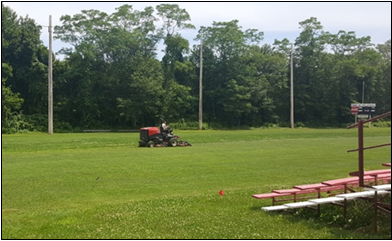
- Mow regularly and consistently when turf is actively growing (at least twice a week during peak growth). Avoid mowing when wet, which can compact soils and create ruts. Intervals between mowing events may be lengthened in the hot, dry summer months, when turfgrass growth slows.
- Keep mower blades sharp all season long. A clean, sharp cut across the leaf blade reduces wounding, allowing the plant to best protect itself from disease. Alternate the direction of mowing to avoid ruts, uneven wear, and compaction.
- Leave clippings on the surface to decompose and naturally supply a source of nitrogen to the turfgrass canopy.
FERTILIZATION:
- A balanced, well-timed fertilizer program allows turfgrass to remain healthy, dense, and able to outcompete weeds. Fertilizers promote the shoot and root growth of turfgrasses. Applications of nitrogen (N), a critical nutrient that encourages leaf growth (3 lbs. N/1000 ft2 per year), has been shown to significantly reduce white clover and dandelion infestations (Calhoun et al., 2005).
- Fertilizer applications should be based on the turfgrass species, field use, and hours of use rather than as habitual seasonal tasks. Athletic fields should be fertilized more frequently, and at a higher rate of application, than home lawn areas, which require less fertilizer to aid in recovery from wear.
- Slow release fertilizers are preferred, as they extend the duration of feeding and provide an even and consistent feed, rather than the rapid release of nutrients produced by a soluble fertilizer.
- Turfgrasses require adequate quantities of 16 essential nutrients for normal growth and development. While these nutrients vary greatly in the quantity needed, a deficiency of any will affect the overall health of the turfgrass stand. Maintain soil pH at a level of 6.0-7.0 to maximize nutrient availability. Follow soil test recommendations for nitrogen (N), phosphorus (P) and potassium (K) application.
- Turfgrasses should be fertilized when actively growing. Over-application and improper timing of fertilizer may cause excess nutrients to leave the turfgrass canopy. In CT, it is recommended that the last fertilizer application be completed in mid-October, before seasonal turfgrass growth stops. The mid-October application allows the turf to benefit from a fall feeding and reduces the risk of unused nutrients being leached into groundwater.
- CT Law stipulates that no P fertilizer applications can be made Dec. 1-March 15, and are not permitted unless a soil test within 2 years indicates a need for P (Henderson, Wallace, and Campbell, 2013).
IRRIGATION:
- Irrigate playing fields to maintain turfgrass density and playing surface quality. If irrigation is not possible, the threshold for weed tolerance must be dramatically increased.
- If irrigation is available, water because of need, rather than as timed, scheduled events. Irrigate efficiently and effectively. Utilize a wilt-based irrigation strategy for mature turfgrass stands by thoroughly wetting the entire rootzone, once mild to moderate signs of drought stress (leaf wilt, foot printing) are evident. This strategy encourages deep rooting, enabling the turfgrass to access water from a greater volume of soil during future periods of moisture stress. Inadequate water during extreme periods of moisture stress will eventually lead to a weak turfgrass stand that is unable to support heavy traffic and is highly susceptible to weed infestation. Too much water, from overwatering or poor drainage, produces a shallow, weak root system and can encourage the establishment of weeds that prefer moist soils.
- Where possible, install water sensors on all irrigation systems. At the beginning of each season, perform an audit to ensure that the system is running properly, providing uniform coverage, and that sprinkler heads are directed to the turfgrass areas, away from impervious surfaces such as parking lots, driveways or roads.
- If fields are irrigated, and sensors do not indicate the need to irrigate, extend the duration between irrigation events, if field quality and recovery will not be compromised. If possible, for fields that are not used during the hot summer, allow them to naturally experience some drought stress or dormancy by reducing frequency of watering or not watering at all. The growth of roots and shoots naturally slows during hot weather. A healthy turfgrass plant will recover from dormancy as turfgrass growth resumes with the onset of cooler temperatures and late summer rains, providing it did not experience extreme prolonged drought. Keep in mind, dormant turf is more susceptible to injury from wear. While turf growth has slowed, weed seeds will germinate and establish, particularly if turf thins to yield open areas.
- Irrigate early in the morning, rather than in the evening, to minimize leaf wetness. Leaf moisture can hasten the spread of turfgrass diseases. Water quickly absorbed by roots is used more efficiently by the plant, which reduces the loss of moisture to evaporation. Avoid early evening and night watering to reduce the duration that the foliage will remain wet and will allow fungi a greater opportunity to infect turfgrasses.
- If an in-ground irrigation system is unavailable, self-retracting water reels are recommended as an easy, inexpensive substitute. Water reels need to be closely monitored to ensure proper operation and delivery of appropriate irrigation.
- For new seedings, light, frequent irrigation is required until all turfgrass species in the seed blend or mixture germinate. If possible, delay overseeding events until early fall when conditions are more suitable for turfgrass growth. Since seed germination is driven by moisture, subsequent turfgrass establishment or recovery following periods of intense field use is often times not possible without some form of irrigation. During the summer months, weeds can easily establish in open spaces where new seedings fail to establish.
AERATION/CULTIVATION:
- Athletic fields regularly become compacted from frequent use. Turfgrasses are challenged to survive in compacted soils, while weeds that thrive in compacted soil easily establish. Mechanical cultivation provides opportunity for air, water, and nutrients to enter the soil, allowing grass roots to grow deeper and stronger.
- Soil can become compacted from excessive foot or vehicular traffic, particularly if the soil is cultivated or mowed when wet. Where possible, on areas that are not used for sports play, reduce or limit foot and vehicular traffic. Compaction stunts root growth, limits water infiltration and drainage, and reduces a plant’s nutrient uptake.
- Best Management Practices for Pesticide-Free, Cool-Season Athletic Fields (Henderson, Wallace, and Campbell, 2013) details recommended timing and methods of cultivation (ipm.uconn.edu/school).
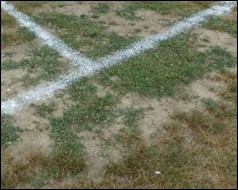
REPETITIVE OVERSEEDING:
For school athletic fields where pesticide use is banned, overseeding with high rates of seed has been found to be an effective practice to maintain the density of the turfgrass stand and reduce or eliminate spaces for weeds to invade. This practice was first recommended in 2008 (Minner et al., 2008), and has been extensively examined and verified by turfgrass extension faculty (Miller and Henderson, 2012; Dodson et. al., 2012). Aggressive overseeding, particularly in the fall, is recommended. Where irrigation is limited, successful establishment can be a challenge. Perennial ryegrass has been the preferred species used for overseeding athletic fields, due to its quick germination. If the window for overseeding is missed or delayed, use of transitional ryegrasses is encouraged, either alone or in combination with perennial ryegrasses, in late fall seedings. These ryegrasses will germinate in cooler temperatures. As an option, late season seedings can be covered with turf covers to aid with germination and establishment. Seed also can be broadcast over worn areas as a dormant seeding, once the ground has been frozen.
Physical and Mechanical Controls that Aid in Weed Control
Physical and mechanical controls include:
- Mechanical removal: Hand pulling of weeds can be an important component of an IPM program when there are only a few weeds that require attention. Use well-designed hand tools, when the soil is moist, for easiest removal. For large areas (e.g., infields), specialized equipment, such as the Rascal, can enhance the mechanical removal of weeds. To prevent additional weed seeds from germinating in surrounding areas after mechanical removal, minimally disturb the soil and overseed or broadcast seed into the open, exposed areas with high rates of turfgrass seed.
- Weed barriers: Useful in playgrounds or landscape areas to prevent weed infiltration in unplanted areas. 4-6” of wood chips, bark, cardboard/newspaper, fabric, or rubber mulches are recommended.
- Heat treatment: Handheld propane flamers or steam weeding devices can be used as a spot treatment control of weeds in non-priority turfgrass areas and landscape beds.
- Control broadleaf weeds for non-selective vegetation control along fences and in parking lots, graveled areas, or cracks in sidewalks. Non-priority turf areas can be spot sprayed but surrounding turfgrass will be damaged.
- Best used in spring or early summer. Most effective on annuals and when weeds are small (fewer than 4-5 leaves; less than a few centimeters tall). The intense heat more successfully injures or kills young plants.
- Heat the leaves only long enough to destroy the waxy cuticle of the leaf in order to disrupt and destroy the plant’s cells (slowly pass over it; do not linger on each plant). Plants are more susceptible to heat treatments in dry conditions.

This highly visible memorial garden was mulched with newspaper and bark mulch. The newspaper was placed under the mulch in order to make its weed-suppressing effects longer lasting.
- Tilling: Useful in particularly heavily weed-infested landscape areas. More successful eradication is possible with annuals, where tilling may be required to kill weeds in order to renovate the area. Tilling the soil in spring or fall, when the soil is at least 60 degrees F and the soil easily crumbles, is recommended. The disturbance of dormant weed seeds may encourage germination and allow the exposure to sunlight. Tilling to reduce weed populations may need to be repeated as multiple events. Measures should also be taken to minimize soil erosion by wind and water in and around the tilled site.
- Fallowing: More appropriate for secondary landscape beds and areas not of high visibility. Effective on perennial weeds, as propagating weed parts are repeatedly cut to deplete them of their stored resources. Best results are seen when fallowing is performed in the fall to desiccate (dry out) and expose the weeds to cold temperatures.
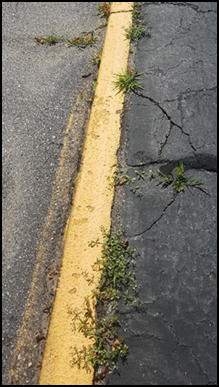
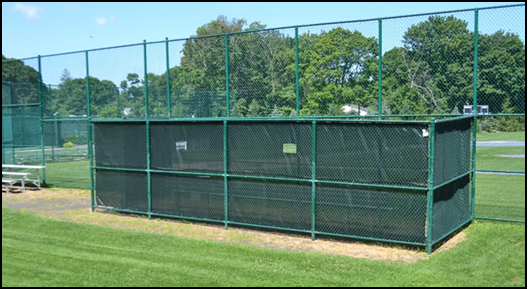
Chemical Controls
EPA exempt, “minimum risk” 25(b) herbicides are the only approved weed control products for daycare and K-8 school properties to manage invading weeds. Minimum risk products are typically non-selective, post-emergent, burn-down products. They act as defoliants that kill leaf and stem tissues of plants that come in contact with the herbicide and are not translocated to the roots. They generally are more effective on juvenile weeds, particularly annuals, while often achieving less impressive results on more established weeds and perennials. Since these herbicides lack residual activity, repeat applications are needed to control new flushes of emerging vegetation. CT DEEP provides a list of minimum risk products which have been approved for use on K-8 properties.
The incorporation of these products offers an additional, albeit limited, option in the reduction of weed populations. While minimum risk products may pose little to no risk to human health or the environment, their exemption from EPA registration means they also are not subject to rigorous impartial, science-based evaluation and testing. Understanding these herbicides and their value is paramount. Any application of these herbicides must be combined with a comprehensive program of best management practices for weed control to be effective. In CT, a commercially licensed pesticide applicator is required to apply all herbicides, including minimum risk products, on school properties.
Corn gluten meal (CGM) is the only pre-emergent herbicide for grassy weed control with EPA exemption status. Use of this product can impact the timing and the success of overseeding on turf areas, which is documented as the primary mechanism, besides necessary cultural practices, to minimize weeds in pesticide free athletic fields. CGM must be applied in early spring 2-4 weeks before summer grassy annuals (i.e., crabgrass) germinate. The root-inhibiting properties of CGM prevent root formation of many germinating plants, but it also has a significant nitrogen component (usually 9-10%), which releases slowly over a 3-4 month period following application (Henderson, Wallace, and Campbell, 2013).
EPA registered pesticides (synthetic or organic) may be considered as part of the maintenance care program for municipal areas or high schools that are separated from day care and K-8 school properties.
Evaluation
Turf and landscape areas should be regularly inspected before and after any type of treatment (chemical, mechanical, or cultural). The effectiveness of the IPM program should be annually assessed based on timely evaluation of treatments, scouting records, staff observations, budget records, and administrative/parent feedback. The UConn Extension Turf and Landscape Assessment Forms (found at ipm.cahnr.uconn.edu/school-ipm) can be valuable record-keeping tools. After several seasons of assessments, detailed record-keeping, and incorporating necessary cultural practices, turfgrass areas will be healthier and denser, with reduced populations of weeds.
Applications for soil tests and protocol for sampling can be obtained through the local Cooperative Extension office. For instructions, visit soiltest.uconn.edu/sampling.php or call the UConn Soil testing lab at (860) 486-4274 or the UConn Home and Garden Education Center toll-free at (877) 486-6271.
Bibliography:
- University of Connecticut. (2015). Annual Turfgrass Research Report
- Bartholomew, C., Campbell, B. & Wallace, V. (2015). Factors Affecting School Grounds and Athletic Field Quality after Pesticide Bans: The Case of Connecticut. HortScience 50(1), 99-103.
- Calhoun, R. N., Rinehart, G. J., Hathaway, A. D. & Buhler, D. D. (2005). Maximizing cultural practices to minimize weed pressure and extend herbicide treatment interval in a cool season turfgrass mixture. Int. Turfgrass Soc. Res. J. 10(Part 2), 1184-1188.
- Charbonneau, P. & Hsiang, T. (2015). Integrated Pest Management for Turf. Ontario, Canada: Ministry for Agriculture, Food, and Rural Affairs.
- Chinery, D., Rossi, F. Weatherwax, D. & Conroy, J. (2004). Report to the New York State Turfgrass Association. Cornell University.
- Curran, W., Johnson, Q., Schulz, B., Chandran, R., & Cahoon, C. (2016). Mid-Atlantic Field Crop Weed Management Guide, Penn State Extension in cooperation with U. Delaware, U. Maryland, Virginia Tech, W. Virginia U.
- Dodson, K. L., Tardif, F., Jordan, K. S. & Lyons, E. M. (2012). Maintaining Turfgrass Coverage Under High Traffic Conditions. University of Guelph.
- Henderson, J., Wallace, V. & Campbell, J. (2013). Best Management Practices for Pesticide-Free, Cool-Season Athletic Fields. University of Connecticut Extension.
- University of Nevada. (n.d.). Integrated Pest Management. extension.unr.edu/program.aspx?ID=15
- Landschoot, P. (1997). Using Composts to Improve Turf Performance. PennState Extension. extension.psu.edu/using-composts-to-improve-turf-performance
- Mangiafico, S. & Guillard, K. (2006). Fall Fertilization Timing Effects on Nitrate Leaching and Turfgrass Color and Growth. Plant Science Articles. 14. http://digitalcommons.uconn.edu/plsc_articles/14
- Miller, N.A., & Henderson, J. J. (2012). Organic management practices on athletic fields: Part 1: The effects on color, quality, cover, and weed populations. Crop Science, 52(2), 890-903.
- Minner, D.D., Valverde, F.J. & Pirtle, R.M. (2008). Seeding rate that maximize turf cover when sown during traffic. Acta Horctic, 783, 57-65.
- Trautmann, N. M., Richard, T., Krasny, M. E., Cushing, P., Hyson, S., Northrup, R., Olynciw, E. & Poseluzny, B. (1996). Monitoring Compost pH. Cornell University. compost.css.cornell.edu/monitor/monitorph.html
- Sylvia, D., Hartel, P., Fuhrmann, J., Zuberer, D. (2005) Principles and applications of soil microbiology. PearsonPrentice Hall, New Jersey.
- Cornell University. (n.d). Weed Management on School Grounds in New York State.
Questions? Contact:
Vickie Wallace
UConn Extension
Extension Educator
Sustainable Turf and Landscape
Phone: (860) 885-2826
Email: victoria.wallace@uconn.edu
©UConn Extension. All rights reserved.
Updated April 2018
